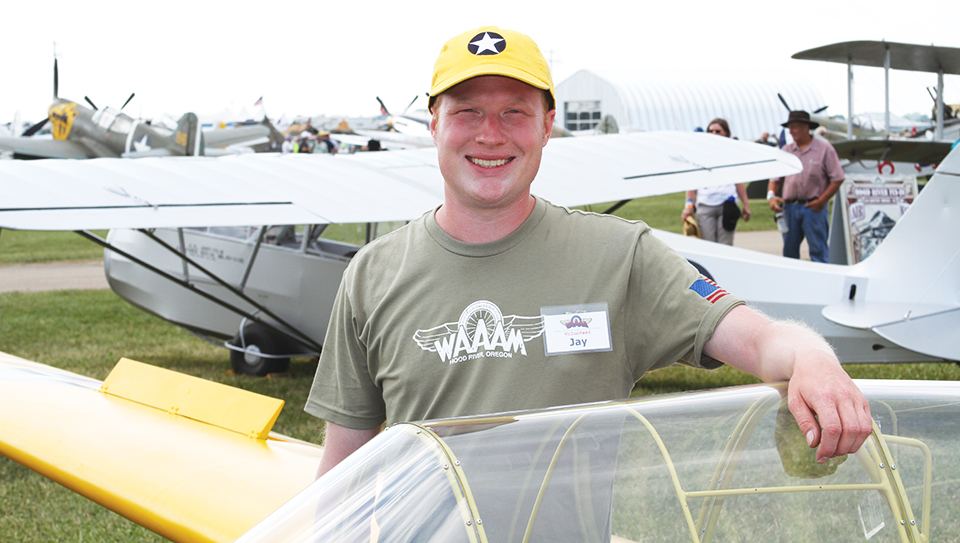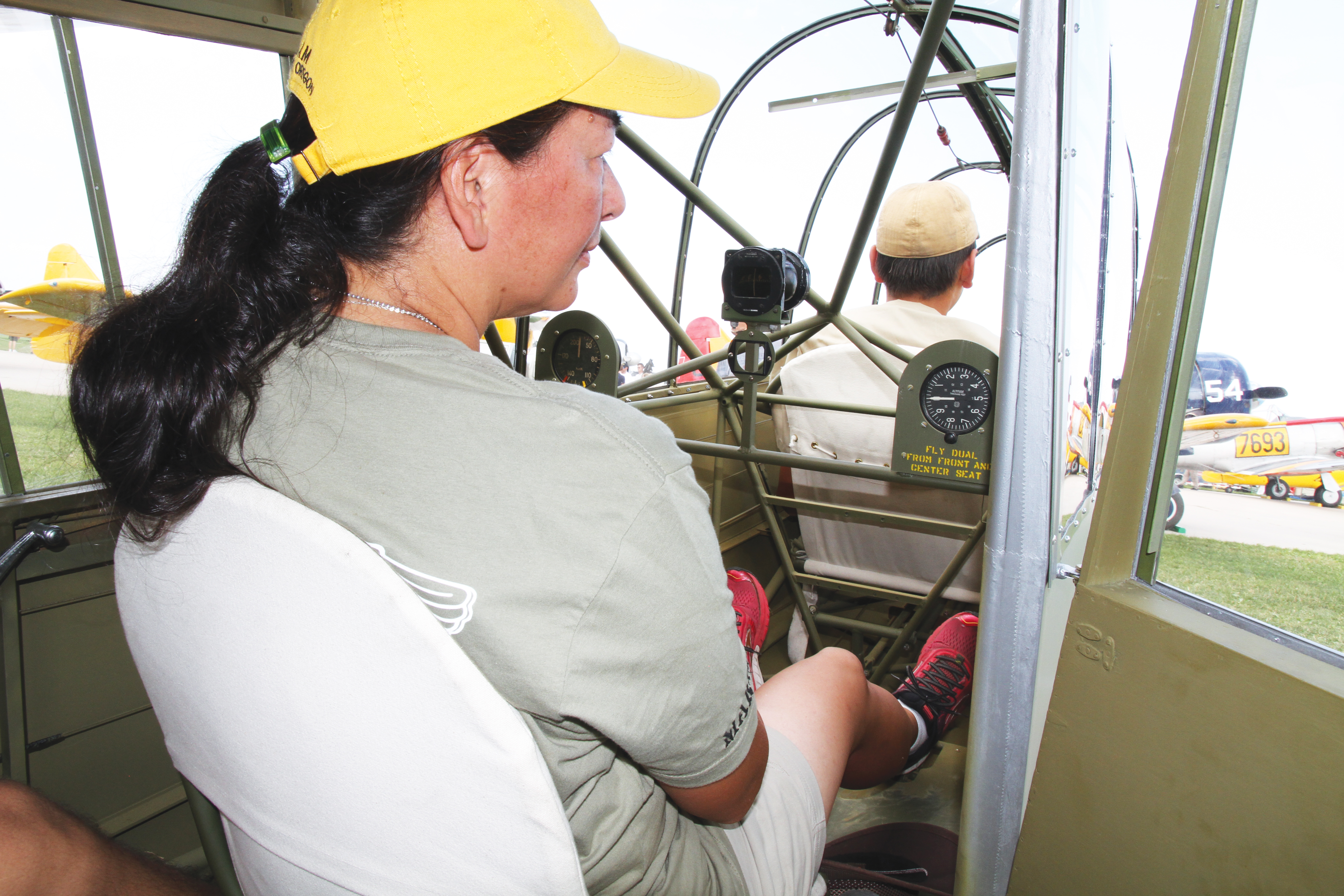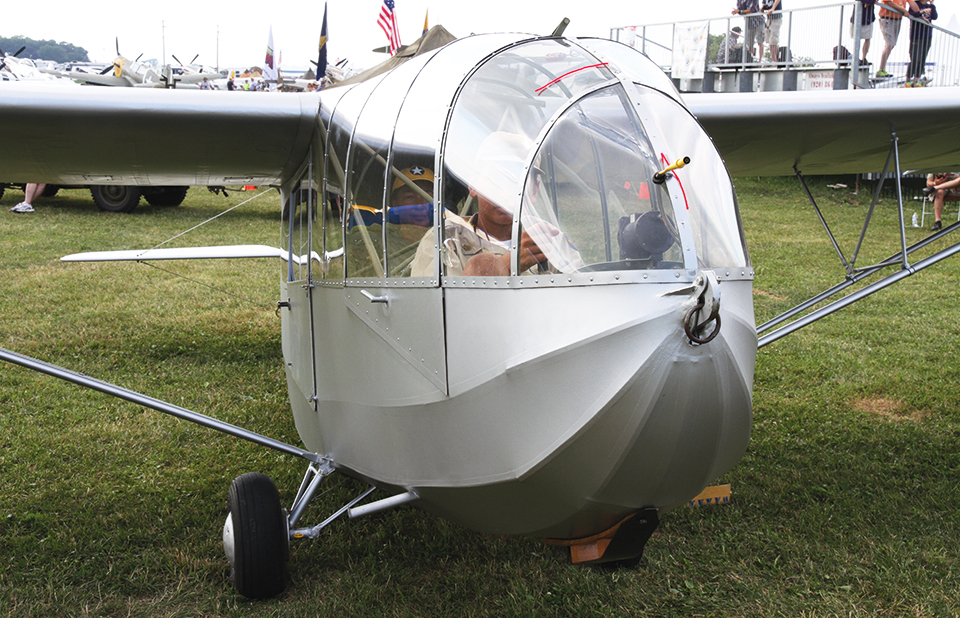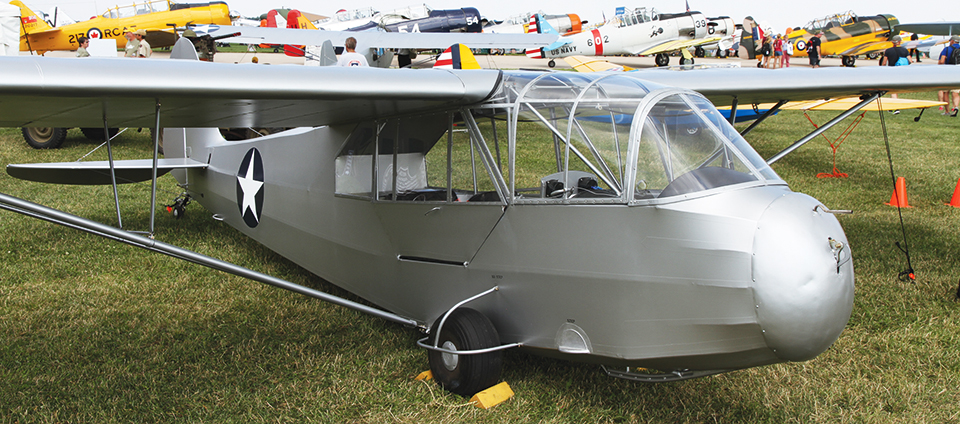Historic Glider Trainers Showcase Wartime Aviation Advances
By Glenn Moore
July 25, 2018 - On May 10, 1940, Germany captured the Belgian fortress of Eben-Emael. They used new technology, aircraft capable of landing soldiers close to target locations. The gliders were silent, more precise than paratroopers, and overwhelmed the fortress in less than half an hour. Other nations, including the United States, rushed to develop their own glider programs.
The Western Antique Aeroplane and Automobile Museum (WAAAM) came all the way from Oregon to showcase gliders that encapsulate the aforementioned era of American flight innovation at EAA AirVenture Oshkosh 2018. Three pieces of history, a Piper TG-8, a Kauffman TG-4A, and a Taylorcraft TG-6, are on display. This noteworthy exhibition traveled with museum volunteers who restore, fly, and explain the history of the aircraft.
“These gliders represent the beginning of the military glider movement,” said volunteer Marici Reid. The TG-4A was first used to train glider pilots, with a decent glide ratio for the time of 22-to-1. Unfortunately, the Kauffman’s strength was also its deficiency. The aircraft’s purpose was to train pilots to fly transport gliders that had nowhere near the same quality of performance as the Kauffman. Additionally, manufacturers would not be able to make enough TG-4A to meet Air Force demand.
An inferior glider was needed, and quickly. To start from scratch would take too much time. Instead of designing from the ground up, three companies, Piper, Taylorcraft, and Aeronca, used their already existing infrastructure to make more appropriate gliders. Marici pointed out that the TG-8 was a Piper Cub after some welding and minus an engine.
Jakonah “Jay” Matson-Bell, the director of aircraft restoration for WAAAM, further elaborated, “There was such a rush to get the troop glider program moving that they modified power planes. They took an L-2 and made it a glider in nine days.”
The new glider’s handling was significantly limited. Volunteer Margaret Cleveland described their ratio as “like a rock.” At a ratio of 10-to-1, they were perfect practice for difficult-to-pilot troop transports such as the CG-4.
WAAAM’s three gliders are restorations, not replicas. The museum has restored more than 350 airplanes, automobiles, motorcycles, and jeeps. This is its second trip to Oshkosh. At one point, it brought a three-cylinder radial-engine-powered Cub to the convention.
In the future WAAAM hopes to bring a prototype Stearman Model 70 to AirVenture. Additionally, it would like to complete its collection of training gliders used by the United States in World War II. “We have all but two,” Jay explained, “We’d really like to get our hands on the Schweizer TG-2 and a Pratt-Read glider.”
The museum is celebrating the 75th anniversary of the glider training program. For those interested in historic aircraft, WAAAM can be found south of the Warbirds in Review bleachers.




